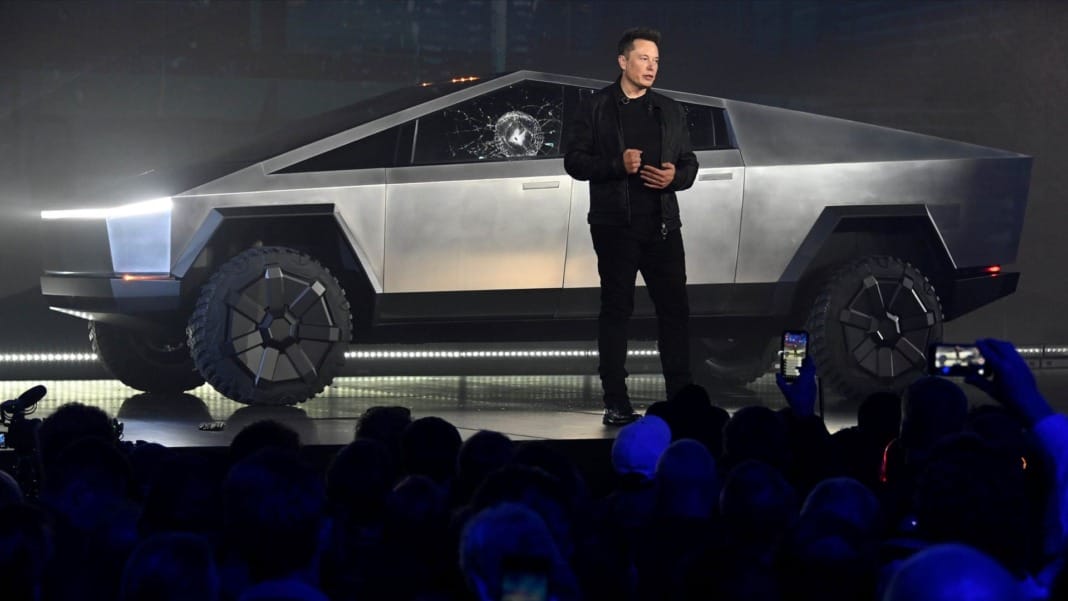Tesla’s Cybertruck, a futuristic and polarising electric pickup, has been making headlines since its announcement. But despite the buzz, its performance in 2024 has raised questions about whether the vehicle can live up to the hype.
In a call with investors in October 2023, Tesla CEO Elon Musk was cautious, saying he wanted to “temper expectations” about the Cybertruck. He called it “a great product” but acknowledged that it might take up to 18 months to contribute significantly to Tesla’s cash flow. Still, Musk couldn’t resist a dash of optimism, claiming “demand is off the charts” with over one million reservations.
Yet, a year later, the picture looks less rosy. Tesla’s latest production and delivery figures suggest the Cybertruck hasn’t quite taken the market by storm.
Production numbers reveal a bumpy year
Tesla reported that in 2024, it produced 94,105 vehicles under its “other models” category, which includes the Cybertruck, Model S, and Model X. Of these, 85,133 were delivered to customers. Analysts estimate that between 35,000 and 50,000 of these vehicles were Cybertrucks.
Kevin Roberts, director of economic and market intelligence at CarGurus, offered a balanced view. “If you expected the Cybertruck to rival the Ford F-150 in volume, it hasn’t. But it’s performed fairly well compared to other lifestyle pickups, like the Ford F-150 Lightning.”
However, the Cybertruck didn’t meaningfully boost Tesla’s sales in 2024. The company reported its first year-over-year sales decline in more than a decade. Despite Musk’s claims of over one million reservations, this hasn’t translated into a million vehicles on the road.
A key issue could be the low US$100 reservation fee, down from the initial US$1,000, which likely attracted customers who weren’t fully committed to purchasing the truck.
Challenges and setbacks
The Cybertruck’s launch has been far from smooth. Viral videos showed vehicles struggling in snow and sand, and there were seven recalls in its first year, including one involving a faulty accelerator pedal. Musk’s public controversies, including his support for Donald Trump, may also have dampened enthusiasm for the vehicle.
Despite these setbacks, the Cybertruck had some early successes. It was the best-selling electric truck in the US in Q2 of 2024 and the third-best-selling EV overall in Q3. In July, it nearly matched the combined sales of all other electric trucks, including the Ford F-150 Lightning and Rivian R1T. However, some analysts believe these figures reflected a backlog of old orders rather than sustained demand.
By the end of the year, signs of trouble became clearer. Used Cybertrucks began piling up on car lots, and their average resale price dropped from US$107,800 in November to US$104,300 by late December. Reports also emerged of unsold limited-edition models being rebranded to sell as regular versions.
A costly gamble
A new Cybertruck remains expensive, with all-wheel-drive base models priced around US$90,000. Leasing costs start at US$900 per month. While the truck qualifies for a US$7,500 federal EV tax credit, this incentive might not last long, as political changes could lead to its elimination.
Looking ahead, the Cybertruck faces stiff competition and uncertain demand. While it has proven to be a unique and eye-catching product, it lacks the mass appeal of Tesla’s earlier successes like the Model Y. Analysts predict 2025 will bring even more challenges for the Cybertruck to gain significant market share.
For now, Tesla’s gamble on a high-priced, niche vehicle instead of a more affordable EV leaves questions about its long-term strategy unanswered.





